Each of the 50 states, the District of Columbia, and the Department of Defense Education Activity will select one middle level and one high school principal to represent their state. State winners are selected from applications submitted to the state associations.
Each state’s selection process and deadlines vary. Application information for each state may be found by contacting your state affiliate.
2018 State Principals of the Year
Alabama
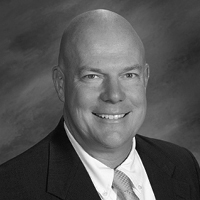
Brian Clayton
James Clemens High School
Madison, AL
Grades: 9–12
Students: 1,905
Region: Suburban
• Team building
• Collaboration
Our story at James Clemens High School begins with the start of the school in 2012. We began the school on the basis of Jim Knight’s work with the Instructional Partner concept. We have placed a tremendous emphasis on creating a collaborative spirit within our teacher learning and continuously try to improve the practice of teaching in the school building. We work to build professional learning communities that address the diverse learning needs of our students. Building these learning communities has led to the increase in our ACT average and also an increase in the number of students that score a 30 or above on the ACT.
Alaska
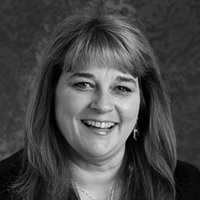
Robyn Harris
Whaley School
Anchorage, AK
Grades: 6–12
Students: 103
Region: Urban
• Communicating my school’s story
• Building a positive culture
What I discovered upon my arrival seven years ago to Whaley School were blank white walls and low staff morale. Immediately, I began a system change, focusing on creating a place where students wanted to be, filling it with colorful walls and inspirational quotes, posting our mission statement for all to see, and providing innovative learning opportunities. In 2014, our Positive Behavior Intervention and Supports efforts helped us prioritize meaningful staff development, community involvement, regularly scheduled parent universities, and engaged student leadership. Real life changes have materialized through increases in positive behavior, students returning to their home campuses, and graduation rates
Arizona
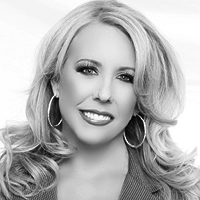
Julie Jones
Desert Edge High School
Goodyear, AZ
Grades: 9–12
Students: 1,697
Region: Suburban
• Collaborative leadership
• Personalizing the school environment
The motto “WE ‘R’ DE—Rigor, Relevance, and Relationships” has become synonymous with Desert Edge High School and propelling its vision of “All students college and career ready”. I facilitated the creation of a school culture of rigorous, relevant learning. Previously the lowest performing Title I school in the district, Desert Edge High School’s graduation rate went from 77 percent to 94 percent, with an increased AP enrollment by 45 percent. As a result of my emphasis on people, not programs, we have enhanced stakeholder autonomy, voice, and support, which has generated trust as well as an innovative spirit that inspires new ideas and gives permission not to fear failure.
Arkansas
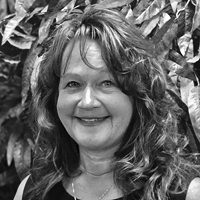
Kay York
Ashdown High School
Ashdown, AR
Grades: 9–12
Students: 430
Region: Rural
• Community involvement
• Building support systems
Ashdown High School applied and have been accepted as a school of innovation, which will afford our students the opportunity to break away from traditional seat time and other restrictions and be able to acquire certifications in welding, industrial maintenance, Certified Nursing Assistant, and other qualifications they can use to obtain substantially higher paying jobs and opportunities than they could get with just a high school diploma. Our college-bound students have more opportunities for concurrent credit classes and AP classes to better prepare them as well. Advisory classes meet once a week with students to discuss career pathways and plan for experiences to help them prepare for college and/or their careers.
California
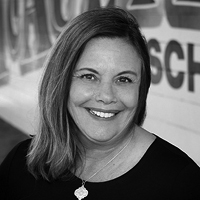
Annie Allen
McAuliffe Middle School
Los Alamitos, CA
Grades: 6-8
Students: 1,195
Region: Suburban
• Intervention programs
• Creating a culture of connectedness
McAuliffe Middle School is a true professional learning community. We work collaboratively to share best practices, analyze data, and create programs so that all students feel valued and supported. Over the last three years, 98 percent of our students have earned passing grades in every class, with over 85 percent of those earning honor roll status. And this year, 99.2 percent of our students earned passing grades in every class, with 100 percent of our 8th graders achieving this status. This achievement is a direct result of a clear vision, the systematic implementation of signature practices, high expectations, instructional rigor, and forging connections with our entire school community.
Colorado
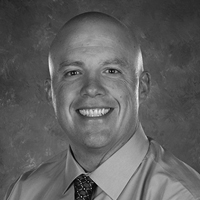
Joe Simo
Centennial Middle School
Montrose, CO
Grades: 6-8
Students: 606
Region: Rural
• Multitiered system of supports
• School scheduling
Our philosophy with students that are performing below grade level is, “we know they are coming, so let’s be prepared.” At Centennial Middle School, we formed a multitiered system of support team that meets weekly to analyze data and best practices so that we can continue to close the achievement gap in the subgroups that are performing lowest. Centennial Middle School has met that challenge and is a “performance” school in the state of Colorado.
Connecticut
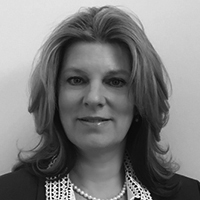
Dianne T. Vumback
Lincoln Middle School
Meriden, CT
Grades: 6-8
Students: 736
Region: Urban
• Improving climate and culture
• Building leadership capacity
Recognizing professional learning communities (PLCs) as a high-leveraged strategy, Lincoln’s leadership team created the structure for common planning time, spent time building capacity within teams, and provided the purpose of the PLC. Concentrating on analyzing data, we engaged teachers in collaboration around teaching and learning—and we have seen significant gains in achievement. With a focus on school improvement, we have replicated the process throughout all grade levels. We set high expectations, do quality work in a collaborative environment, celebrate our wins, work hard on our losses, and share our expertise to enhance the learning environment.
DODEA
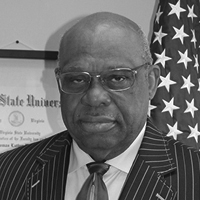
Thomas Whittle
Antilles High School
Fort Buchanan, Puerto Rico
Grades: 9–12
Students: 410
Region: Suburban
• Data analysis
• Culture and climate
The success story that I am most proud of is the AP program growth. In the past four years, the AP program has seen a 254 percent participation rate growth and a 54 percent pass rate increase in students who score a three or better. One year, our pass rate was higher than the national average and our school was instrumental in the district receiving the College Board Award for small district AP growth. One of our graduates is a Thurmond Scholarship finalist and a junior at West Point Military Academy, two students are attending Brown University on full scholarship, and two are attending the United States Air Force Academy.
Florida
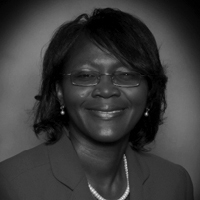
Rachel Shelley
Booker High School
Sarasota, FL
Grades: 9-12
Students: 1,181
Region: Urban
• Motivating at-risk youth
• Setting and maintaining high expectations
In continually promoting and expecting college and career readiness for every single student, I have created a purposeful and relevant college/career course for all freshmen, aligned to the diverse needs of our enrollees. Students create portfolios, practice milestone and goal setting, and explore internship/apprentice opportunities. These efforts are supported by various partner organizations. Despite the fact that more than 60 percent of our incoming freshman read below grade level, we work to prepare our graduates to be productive members of society. This is reflected in the fact that every student has a documented postsecondary plan, which may include a gap year, entering the workforce, military service, or college/conservatory enrollment.
Georgia

Dara Bennett
Pierce County High School
Blackshear, GA
Grades: 9–12
Students: 1,052
Region: Rural
• Developing professional learning communities
• Data driven instruction
When I came to Pierce County High School, the school suffered from a negative school climate, low standardized test scores, and a graduation rate of 56 percent. This year, the graduation rate was 90 percent. In 2017, our school was designated an NASSP Breakthrough School for the second time and now has a very positive school culture. Focusing on the development of professional learning communities to promote teacher input and collaboration was key to our success.
Hawaii

Sean Wong
Roosevelt High School
Honolulu, HI
Grades: 9–12
Students: 1,375
Region: Urban
• Culture-based learning
• Collaborative leadership
Collaborative leadership has helped Roosevelt High School (RHS) to improve student performance. We have been fortunate in creating, sustaining, and/or strengthening partnerships that provide various opportunities for our students. One focus is increasing student satisfaction, voice, and empowerment. I have collaborated with my leadership team to form committees focusing on important programs and processes, which also align to our school’s academic plan. The combining of teacher and student voice through the committees has led to improved dialogue among stakeholders. As a result of sustaining a positive culture, RHS was ranked as the #1 public high school in Hawaii for 2017 by U.S. News and World Report.
Idaho
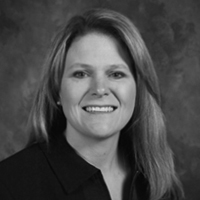
Amy McBride
Robert Stuart Middle School
Twin Falls, ID
Grades: 6-8
Students: 679
Region: Suburban
• Instructional leadership
• Collaborative and shared leadership
When I first came to Robert Stuart Middle School seven years ago, I was struck by the large volume of discipline that the school dealt with and the large number of students who failed even one class, especially in 6th grade. After studying the problem in depth, I implemented a plan to teach students in 6th grade how to be successful in secondary school through organization, time management, and study skills. Since that time, the number of F grades have been reduced by 92 percent, the number of A grades have increased by over 200 percent, and discipline has been reduced by over 90 percent.
Illinois
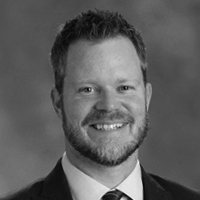
Paul Kelly
Elk Grove High School
Elk Grove Village, IL
Grades: 9–12
Students: 1,918
Region: Suburban
• Facilitating teacher leadership
• Assessment literacy
At Elk Grove High School, we have redefined what it means to be college, career, and life ready. Using the inseparable core principles of the Breaking Ranks framework, we analyzed our student performance data in areas that are indisputably correlated to long-term life success—connectedness to the school community, academic achievement in rigorous coursework, and industry credentials/licensure. While simultaneously increasing student co-curricular participation and staff morale, we have nearly doubled the number of students receiving college credit prior to graduation from just over 40 percent to 80 percent in just a few years.
Indiana
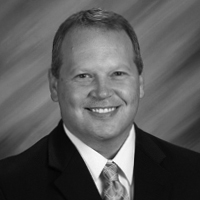
Dave Strouse
Batesville Middle School
Batesville, IN
Grades: 6–8
Students: 468
Region: Rural
• Response to intervention
• Inclusion
In 2014, we were creative with our scheduling and moved towards inclusion for our special education students. Special education teachers identified students for inclusion classrooms and general education teachers were quickly identified. In 2016, co-teaching went to another level as special education teachers started using other practices such as station teaching, parallel teaching, alternative teaching, and teaming in the math and language arts classrooms. We have seen our assessment scores improve for students with disabilities on the Indiana Statewide Testing for Educational Progress-Plus after moving to inclusion. Our journey to inclusion has made our staff stronger and more student-centered.
Iowa
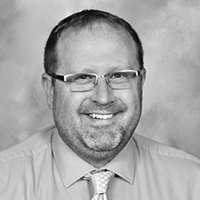
Ryan R. Dumkrieger
North High School
Sioux City, IA
Grades: 9-12
Students: 1,502
Region: Urban
• Communication
• Collaboration
Our work with at-risk students has come a long way since my first year at North High School (NHS). Upon starting at NHS, I had students in our at-risk program complete paper-based packets of work to earn learn and earn credits. Through advocacy, we transitioned to a fully online program, revamped how teachers supported the students, and raised the expectations of students in our at-risk program. This resulted in a graduation rate increase of 4 percent and a 50 percent decrease in dropout rates. In 2017, NHS had the highest graduation rate of the three high schools in the district, despite having the largest at-risk population of students.
Kansas
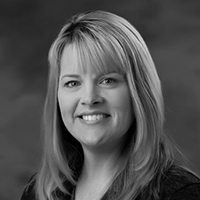
Kristy Custer
Complete High School Maize
Maize, KS
Grades: 9–12
Students: 62
Region: Suburban
• Dropout prevention/alternative education
• Character education
Approximately 10 years ago, Complete High School Maize staff embraced the educational concept of service learning, which combines learning objectives with community service. We saw such improvements in schoolwide attendance and the overall culture of the school that we decided to make character education not just something added to the educational plate but the educational plate itself, which everything else sat on. We implemented monthly service projects; daily, hour-long character education classes for each student; and looked for opportunities to serve. Today, our attendance rate is over 85 percent. We have 100 percent attendance at parent/teacher conferences. And we provide essential services to our school and extended community.
Kentucky
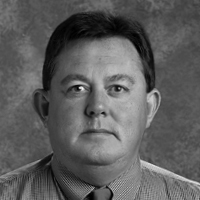
David H. Bolen
George Rogers Clark High School
Winchester, KY
Grades: 9–12
Students: 1,523
Region: Urban
• Creating scheduling
• Effective daytime intervention program
Fostering an environment of collaborative leadership has contributed markedly to George Rogers Clark High School’s transformation from focus/needs improvement to school of distinction. A leadership team of administrators, teachers, and students meets weekly to brainstorm ideas for school improvement. Department chairs have full leverage in academic goal-setting and program development. Multiple teachers who aspire to be administrators and curriculum specialists are given autonomy in creating, executing, and leading instructional programs. We also regularly engage community leaders in the educational process. In identifying and developing leaders across all school ranks and enlisting community leaders, we ensure student achievement is punctuated by a multi-faceted, dynamic instructional approach focusing on both college and career readiness.
Louisiana
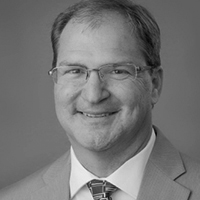
Thomas Byler
North Vermilion High School
Maurice, LA
Grades: 9–12
Students: 650
Region: Rural
• Teacher leadership
• Community service
Inheriting a successful school five years ago, it was very important that teachers buy into the concept of teacher leadership, also known as schoolwide collaboration. Our school performance score has grown from 92.9 to 125 because teachers took different components and became experts. They then were able to feel like a viable part of the team and were allowed to create programs that aided in our growth. From ACT workshops, schoolwide intervention plans, and college and career ready pathways, our team of teacher leaders have taken a good school and created an atmosphere where nothing less than great is excepted. Expectations were raised and students met the challenge.
Maine
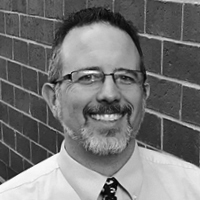
Mark Hatch
Messalonskee Middle School
Oakland, ME
Grades: 6-8
Students: 518
Region: Rural
• Cross-curriculum literacy approaches
• Shared leadership
Literacy is the backbone of instruction at Messalonskee Middle School. In a span of 3 years, the staff took part in professional development and implemented data-proven strategies to positively impact students’ reading abilities. The outcome resulted in over 85 percent of the students reading at or above grade level based on state assessment data. This was a dramatic increase when compared with previous years. This growth was made possible by a true cross-curriculum approach that focused on teachers knowing how to help their students gain content knowledge through supported reading approaches.
Maryland
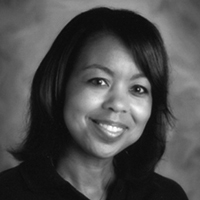
Mildred Charley-Greene
Northwood High School
Silver Spring, MD
Grades: 9–12
Students: 1,722
Region: Suburban
• Communication
• Vision for student success
Student voice data revealed that students wanted challenge and rigor that they felt was lacking in their courses. As part of professional development, teachers have examined their perceptions regarding rigor, to look closely at how their lessons are planned and executed, and to use what they learn to ensure all students are challenged.
Our work is paying off. The number of African-American students in AP courses has risen from 26 percent in 2015 to 34.3 percent in 2017; for Hispanic students, the percent increase from 20.2 to 24.1 during the same time period.
Massachusetts

Matthew Colantonio
O’Donnell Middle School
Stoughton, MA
Grades: 6-8
Students: 825
Region: Suburban
• School climate and culture
• Support for at-risk students
When I started at the O’Donnell Middle School (OMS), I knew that the school climate and environment needed to improve and I made that my number one priority. With that in mind, we rewrote the mission statement to reflect our collective belief in a true community of learners. We renovated the worn-down library media center, gym, cafeteria, and we added a new school sign out front. We added a big spring musical production, a production that is a schoolwide effort (parents help out, art teachers and students create sets and costumes, and the show appeals to the whole town, not just the school). We also added an OMS Chapter of the National Junior Honor Society as one of many ways we emphasize the value of service here for students.
Michigan
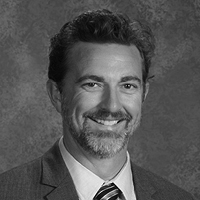
Jason Schrock
Howell High School
Howell, MI
Grades: 9–12
Students: 2,280
Region: Rural
• Decision making
• Team building
In the first seven years of my career, I taught under six different principals. The staff learned to “stay in the box” because leadership was inconsistent and unpredictable. When I became principal, I began to build trust with the staff, which led to creativity over time. Small steps of risk-taking on my behalf (working alongside teachers to bring in Link Crew or a social media course) began opening doors for staff willing to take risks, approach instruction differently, and focus on creating a learner-centered culture. Our new school improvement structure includes student and teacher voice, which led to a weekly flex hour for students to explore their interests.
Minnesota
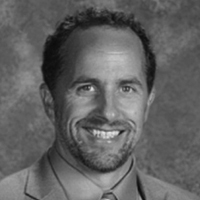
Mark Mischke
Buffalo High School
Buffalo, MN
Grades: 9–12
Students: 1,890
Region: Suburban
• Developing a strong school climate
• Bringing people together to be successful
The Right Choice Program is an eight-district collaborative focused on creating a high-quality alternative to suspension program not only for students at Buffalo High School, but for students from eight surrounding school districts. It is located at our Wright County court house and receives daily support from probation, human services, and chemical/mental health programs that are housed at the court house. Students are transported to the program daily and are able to serve both short-term and long-term suspensions in a well-supported educational environment. It is truly a restorative program where students are able to develop the skills they need to work through the behaviors that forced them to be removed from school. Right Choice was the “Local Government Innovation Award” winner in 2015 and has led efforts to create four other school collaboratives throughout Minnesota.
Mississippi
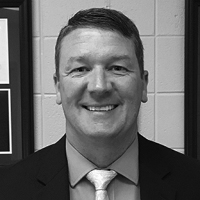
Chris Chism
Pearl High School
Pearl, MS
Grades: 9–12
Students: 1,165
Region: Suburban
• Data analysis
• Relationships with teachers/students
Over the last few years, my observations have been done with a host of teachers from various disciplines, which resulted in our teachers receiving a wide range of experiences regarding best practices and classroom management. Because of this process, our graduation rate has risen from 78 to 94 percent, and the graduation rate for our special education students has risen from 35 to 78 percent—the highest in the state of Mississippi. This process has also allowed me to learn from my own teachers and improve my own craft.
Missouri
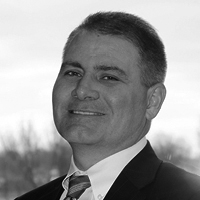
Jeff Meisenheimer
Lee’s Summit North High School
Lee’s Summit, MO
Grades: 9–12
Students: 1,834
Region: Suburban
• Equitable enrollment in rigorous courses
• Earning the trust of teachers
In the spring of 2016, I attended the Missouri Association of Secondary Principals Conference. During this conference, I had the good fortune to learn about Equal Opportunity Schools (EOS). Through a partnership with EOS, our school had the opportunity to provide more equitable enrollment in our IB courses. We discovered through data that our underrepresented students were predominantly from low income families. Utilizing a team approach through our advisory program, we identified underrepresented students who we then recruited for IB courses. Over a two-year period, we experienced a 21 percent increase in the number of students enrolled in IB courses. Additionally, we closed the African-American IB enrollment gap from 19 to 5 and eliminated the gap with Hispanic students.
Montana
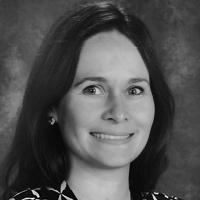
Hannah Nieskens
Whitehall 6–12
Whitehall, MT
Grades: 6–12
Students: 222
Region: Rural
• Education law
• Career and technical education
My staff shares leadership and decision-making responsibilities in a culture where everyone is committed to ensuring that students learn. Teachers work together in professional learning communities to analyze and improve practice. We enact curriculum change, use evidence-based interventions, and devise multitiered systems of support learning pathways. We build partnerships with local colleges and the Montana Digital Academy. In Montana, every 11th grade student is required to take the ACT. Three years ago, Whitehall High School ranked 99th of 166 high schools in the state as measured by ACT test. The following year, WHS ranked 25th in the state. Last year, we ranked 6th.
Nebraska
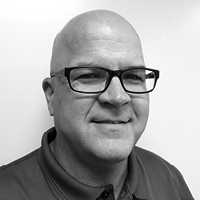
Brad C. Jacobsen
Ashland-Greenwood Middle & High School
Ashland, NE
Grades: 9–12
Students: 257
Region: Rural
• Evaluation process
• Building positive culture and relationships
At Ashland-Greenwood Middle & High School, we have placed a tremendous amount of time, effort, and resources to personalize our school environment. Our belief is that if a student feels accepted and valued, they will learn and perform at a higher level. We also recognize that to be effective we must teach any behavior or action we believe is important, so, we borrow this thought from Dr. Marzano: “Teach and re-teach desired behaviors, constantly.”
Nevada
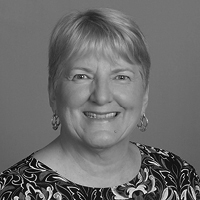
Jamey Hood
Elton and Madelaine Garrett Junior High School
Boulder City, NV
Grades: 6-8
Students: 437
Region: Rural
• Building relationships and improving culture
• Empowering teachers and staff
Building relationships is one of the most important aspects of being an effective leader. The importance of this was emphasized this school year when I worked together with a student and her parents to offer support as the student made the decision to transition from male to female. Last year, the student came to me and I worked with the parents to promote a positive, accepting environment on campus, and provided training for staff to provide them with the tools necessary to assist other students. This year, we worked with the district office to make necessary changes in the system to help with acceptance of the student in her future. As students enter our buildings we need to be more accepting of who they are, what stories they bring, and how we can help them mature into productive, empathetic citizens.
New Hampshire

Rob Scully
Souhegan High School
Amherst, NH
Grades: 9–12
Students: 793
Region: Suburban
• Promoting student agency
• Supporting professional development
To prepare students to be college, career, and life ready, we must move beyond the conventional metrics used to measure student performance. With that goal in mind, we worked to personalize the learning experience and engage students as co-designers in their own learning. We then measure their performance using dispositions like collaboration skills, communications skills, and determination—their ability to fail and repeat until success. The critical element in improving student performance is increasing student agency.
New Jersey
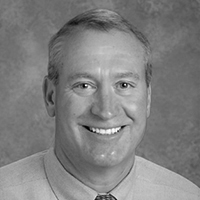
Matthew Jamison
Ocean City High School
Ocean City, NJ
Grades: 9–12
Students: 1,252
Region: Suburban
• School improvement teams
• Professional learning communities
One of my success stories is the development and the embedding of professional learning communities (PLCs). Around five years ago, I realized the school community needed to better harness or tap into the expertise of the faculty in terms of instructional leadership of the school. The team approach may be common in the middle and primary settings, but at the secondary level, the departmental structure is most common. I presented a plan to the faculty that enabled them to organize PLCs with memberships ranging from three to six members. In this model, the faculty, through PLC work, better utilized the holistic expertise of teachers in developing student growth objectives that addressed the achievement gap.
New Mexico

Warman Hall
Aztec High School
Aztec, NM
Grades: 9–12
Students: 950
Region: Rural
• Leading through listening
• Servant leadership
After a school shooting took the lives of two students at Aztec High in December 2017, our school community came together the next semester on March 14 to collaboratively plan a student-led walk-up ceremony on campus. Our student council wanted to advocate for more commitment from their peers to be involved in making a positive change in their school and community. Students filled out pledge cards highlighting commitments ranging from acts of kindness to informed voting in the next election. These pledge cards were then displayed in honor of our two student victims. The school and community saw this event as the statement of empowered healing that our student leaders hoped to send after our recent school tragedy.
New York
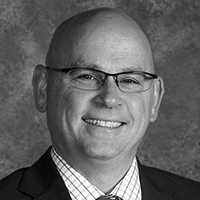
Kevin Strahley
Windsor Central Middle School
Windsor, NY
Grades: 6-8
Students: 384
Region: Rural
• Culture building
• Personalization of middle level education
I have made personalization a priority. Besides memorizing the names of all students prior to orientation, I greet them at the door each morning and wave to every bus at dismissal. I also hold “Lunch with the Principal” monthly to hear what students like about the school and how they feel it could be improved. Additionally, each student is assigned to a small advisory that meets daily. Here, students interact and engage in personalized and thought-provoking conversations and activities that strengthen our school community. They create their own name, banner, and norms, eat breakfast together, compete in contests, and plan and conduct community service projects.
North Carolina
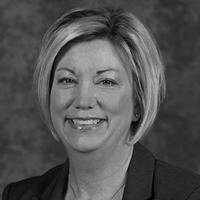
Doris Sellers
A.C. Reynolds High School
Asheville, NC
Grades: 9–12
Students: 1,173
Region: Suburban
• Improving graduation rate
• Building relationships with community
A student who is homeless, hungry, without parents, and who has academic and social deficits needs additional supports to remove the barriers that limit opportunities for success. Once these barriers can be addressed, we can begin to involve students in engaging classrooms and models of academic success. At our school, we do this through various intervention and support strategies in conjunction with partnering agencies. When we can make the social, emotional, and financial environment more equal, subgroups and achievement gaps can begin to close and educational opportunities open for the future.
North Dakota
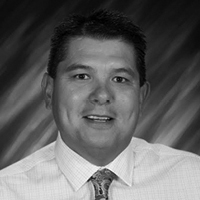
Shane Azure
Northwood Public School
Northwood, ND
Grades: 7–12
Students: 120
Region: Rural
• Building relationships
• Coaching for growth
For the past few years, we have been working within the framework of Marzano High Reliability Schools and have become Level 1 certified. This means that Northwood Public School has created a “safe and collaborative culture,” which is the foundation for the next levels. With a dedicated staff, I have implemented several innovative measures that have led to improved student achievement. Positive results are evident in areas such as improved graduation rate, improved ACT scores, and an increase in the number of students qualifying for the North Dakota Academic and CTE scholarships.
Ohio
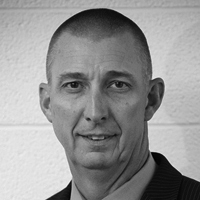
Charles A. Rinkes
River View High School
Warsaw, OH
Grades: 9-12
Students: 629
Region: Rural
• Building relationships/leaders in my building
• Improving the culture of a school community
Upon becoming principal, I set a goal to work on improving the culture and climate at River View High School (RVHS). I started this process by conducting individual senior interviews. I ask every senior the same seven questions and depending on their answers, the interview could last ten minutes or up to one hour. It is up to them. It has become a rite of passage at our school to sit down with me for this interview. Seniors look forward to the opportunity to tell me what teacher most impacted their life or any regrets they hold as they reflect upon their past four years. The question that has evolved over the years and the reason I spend a tremendous amount of time on the interviews is, “Tell me what we can do to at RVHS to make this school experience better for others?”
Oklahoma
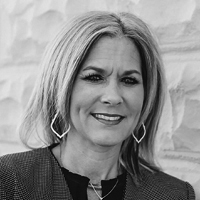
Kim Coody
Glenpool High School
Glenpool, OK
Grades: 9–12
Students: 738
Region: Suburban
• Creativity in scheduling
• Positive messaging to create culture and climate
Data was showing that a portion of our students were not performing academically. Through conversations with students and staff, we saw a need for students to explore career paths that would connect the “why” for them academically. Through collaboration with community businesses, students have the opportunity to intern and receive credit. All students also have the opportunity to retake assessments after a required remediation session, but some of the lower performing students were not taking advantage of this opportunity. As a result, Warrior Wednesday was created. Students choose enrichment classes during Warrior Wednesday and those who need remediation or intervention have time to work with content specialists during that time. Thirty-three percent less students were failing courses due to Warrior Wednesday. Staff and students love the program!
Oregon
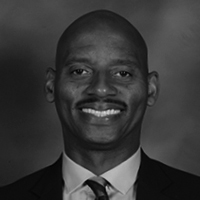
Curtis Wilson
Benson Polytechnic High School
Portland, OR
Grades: 9–12
Students: 978
Region: Urban
• Open-minded when it comes to leading my school
• Supporting the students, parents, and staff
Being a principal sometimes involves dealing with long hours, tough-minded parents, and strong-willed staff. The one thing that has always keep me grounded was my relationship with students, staff, and parents. I am a very collaborative person and I believe in listening to my students and staff and supporting parents. One of the things that I do to support and build relationships with my students is teach all of my freshmen students Zumba in the spring. Teaching Zumba forms a great bond between me and my freshmen students. I teach three, 60-minute PE classes of Zumba in one day and my freshmen students and I really get to know each other better throughout this activity.
Pennsylvania
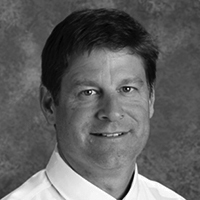
Kyle H. Wetherhold
Wilson West Middle School
Sinking Spring, PA
Grades: 6-8
Students: 729
Region: Suburban
• Student-centered approach to education
• Proactive approach to student learning
We at Wilson West Middle School have made it a point to personalize the school environment to ensure that all students have an adult to talk to, a club/intramural to be active in, and academic choices to help make them successful. The idea is to make it as welcoming as possible for all who enter the building. This creates an atmosphere in which the students want to be here and learn here. We have added independent studies to our course selection. Our advisory groups meet once a cycle. We look at data from the whole child perspective, not just the numbers.
Rhode Island
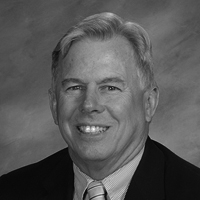
Joseph D. Hurley
Barrington High School
Barrington, RI
Grades: 9–12
Students: 1,151
Region: Suburban
• Professional learning communities
• Developing a positive school culture
As an instructional leader, I have embraced the tenets of professional learning communities (PLCs) by creating common planning time for all teachers and focusing on a shift from what is being taught to what is being learned. I have been actively engaged in several Solution Tree PLC professional development opportunities aimed at continuing to foster the PLC philosophy throughout the Barrington school community. As a school leader, I firmly believe in a model of shared decision-making and continuously look for input from key stakeholders before implementing important policies, programs, and procedures. Most recently, I have begun working on deeper learning strategies that focus on self-directed learning by all students.
South Carolina
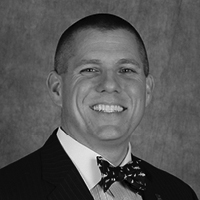
Luke Clamp
River Bluff High School
Lexington, SC
Grades: 9–12
Students: 2,065
Region: Suburban
• Communication
• Vision
Lucas Clamp fosters a culture that stems from a unique desire to connect with each student, developing their skills and talents, and believing their individual and collective contribution to a local and global community will change the world. One student stated that he “maintains a warm and secure climate in which both students and staff are held to high standards,” and the results reflect this. For instance, a commitment to closing the achievement gap with African American students prompted teachers to provide unique, differentiated learning experiences and intervention. Over three years, scores have risen from 42.9 percent to 68.6 percent in ELA and 65.8 percent to 87.9 percent in math. The overall graduation rate has also increased to 94.1 percent. Lucas has also strived to ensure teachers feel supported. He facilitates teacher collaboration by working with lead teachers and works with the scheduling team to ensure that teachers have one hour of collaborative planning time built in their schedules for every course that two or more teachers teach.
South Dakota
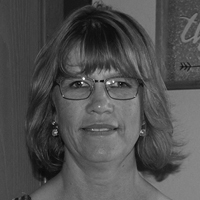
Julie Marshall
Timber Lake School
Timber Lake, SD
Grades: 6–12
Students: 175
Region: Rural
• Relationship building
• Professional learning communities
One of the educational accomplishments that I am most proud of in my tenure as an administrator is the creation of a summer credit recovery program for Timber Lake High School students. Our past practice was to set students up on an online course that they completed independently. This did not set students up for success. The new format that has been in place for two years and requires students to report to school for half days five days a week. At school, they receive instruction, encouragement, and accountability from staff. Our district has reaped the benefits of this new format with several students recovering credits for a timely graduation!
Tennessee
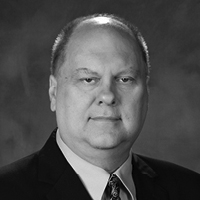
John E. Ash
Central Magnet School
Murfreesboro, TN
Grades: 6–12
Students: 1,234
Region: Suburban
• Improvement of ACT scores
• Advisor-advisee program
I developed the first 6–12 magnet school in Rutherford County. Central Magnet School quickly became the academic leader of Tennessee. It was ranked by U.S. News and World Report as the number one school in 2017 and 2018. The class of 2018 had an average ACT of 30.6 and the 193 graduates received $11,800,500 in scholarships. Central administered 1,409 AP tests in 2017, with 88 percent receiving a 3 or higher. The school has also excelled in all areas. Central has won numerous state championships in sports. The Central Robotics Team is by far the most successful one in the state. Central has also showcased the finest band, orchestra, and drama department anywhere. Central students have attended some of the finest universities in the country and continued their impressive academic successes.
Texas
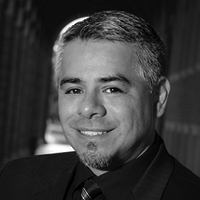
John M. Martinez Jr.
Mackenzie Middle School
Lubbock, TX
Grades: 6–8
Students: 568
Region: Urban
• STEM education and the makerspace movement
• 21st century teaching and learning through proficiency-based learning
A college education should be accessible and attainable no matter one’s situation. It is for those willing to work hard to achieve it. Thus, it is the school’s responsibility to create an environment where this belief permeates the culture of a campus. Our philosophy at Mackenzie is all children should be college ready, career ready, military ready, and life ready. Through our “Mackenzie Goes to College” day experience, all scholars have the opportunity to visit three different colleges prior to enrolling in high school. With so many of our children coming from economically disadvantaged backgrounds, it is imperative that we open their eyes to the possibilities before them. Where families struggle in providing opportunities, it is the school’s responsibility to fill these gaps and better our community with an educated and enlightened society.
Utah
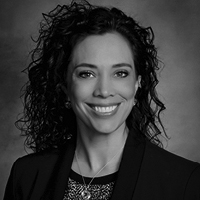
Dixie Rae Garrison
West Jordan Middle School
West Jordan, UT
Grades: 7-9
Students: 885
Region: Suburban
• Intervention, enrichment, and credit recovery programs
• Trauma responsive interventions
When I was appointed principal, West Jordan Middle School had a reputation of being a “ghetto school” and the physical facility was falling apart. I immediately went to work on multiple initiatives to turn things around. This was done through collaborative leadership and relying on the strengths and passion of teachers, parents and community members. Through a shared vision, we secured a bond to replace the school, we proliferated student leadership opportunities, implemented schoolwide mindfulness/trauma-informed practices, transformed grading practices to standards-based, created a wildly successful 9th grade credit recovery program, and raised end-of-level test scores. The passing rate went from 75 percent to 98 percent.
Vermont
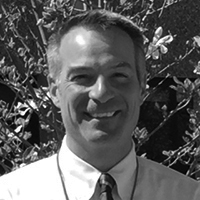
Adam Bunting
Champlain Valley Union High School
Hinesburg, VT
Grades: 9–12
Students: 1,330
Region: Suburban
• Meaningful proficiency-based learning practices
• Leading for personalization
Champlain Valley Union High School (CVUHS) has become a pioneer in the implementation of meaningful personalization and proficiency-based learning practices. All students are instructed and assessed on transferable graduation standards evident in courses, self-directed studies, community experiences, and more. While all learning is important, CVUHS is focused on transformative experiences that ground purpose, clarify direction, deepen engagement, and bolster skill. From interdisciplinary teams in the 9th and 10th grades to advisory, students are asked to take ownership of their learning journey guided by our school’s three rules: take care of yourself, take care of each other, take care of the place.
Virginia
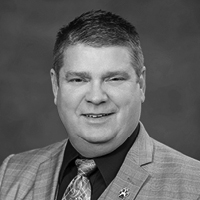
David S. Ellena
Tomahawk Creek Middle School
Midlothian, VA
Grades: 6-8
Students: 1,510
Region: Suburban
• Collaborative leadership
• Building trusting relationships with stakeholders
This year, we implemented a modified check in/check out system to monitor students’ grades. Every two weeks, each administrator would run a report to monitor students with Ds and Fs. They would work with the school counselor in that grade level and meet with each student individually to discuss the class they were struggling in. They would then work with the student to create a plan moving forward. These plans included utilizing our fifth block period to get extra help, organizing assignments and creating a study plan for each student. Our team would then continue to monitor the progress of each individual student. This has helped reduce the number of failures in our school and assisted in severely limiting the number of retentions in each grade level.
Washington
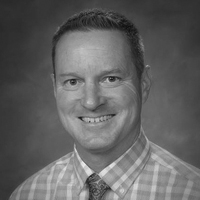
Marc Gallaway
Selah Middle School
Selah, WA
Grades: 6-8
Students: 834
Region: Rural
• Building a school culture
• Building trust with staff
I would like to share a story of how I personalize our school environment. School culture and relationships are of the utmost importance to me. After my first year as principal of Selah Junior High School and students were leaving for the summer, one student came up to me and said this was the best year so far in his education. So, I of course had to ask why. He told me because this was the first year he didn’t feel like a number at school. He felt like a student because I called him by name every single day. This is so important in developing a school culture. Just simply calling a student by name can have a lasting impact.
West Virginia
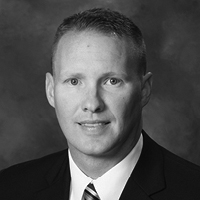
Trent Sherman
Martinsburg High School
Martinsburg, WV
Grades: 9–12
Students: 1,380
Region: Suburban
• Conflict resolution
• Hiring
James C. Humes, author and former presidential speechwriter, once said, “The art of communication is the language of leadership.” Communicating quickly and effectively to my staff, students, parents, and community was a challenge. However, when social media began to explode, I realized that I could harness it to personally communicate with all stakeholders at Martinsburg High School. My first step was to open a Twitter account; the response from my target audience was quick and positive. Currently, I post to inform, to celebrate, and to teach. Hashtags have brought focus to areas—#NoBullJustDogs and #BeADifferenceMaker lead my followers to specific conversations regarding positive behavior and outstanding student accomplishments. Today, I have nearly 2,300 followers and growing. I am truly reaching my school and community using “the language of leadership.”
Wisconsin
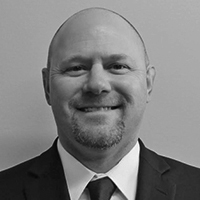
Michael J. Kruse
Stoughton High School
Stoughton, WI
Grades: 9-12
Students: 947
Region: Rural
• Special education inclusion
• Collaborative leadership
The belief that all students can learn and be successful is the foundation of student-centered collaborative leadership. The most important skill to learn when working with people is trust. You have to be able to get out of your own way, let go of the need to control everything, and believe in the people you work with. One of the best examples of multi-faceted program development and collaborative leadership for Stoughton High School would be the creation of our Fab Lab. We developed our STEM curriculum, trained our staff at MIT, secured over $450,000 in grants and community funds, established a local volunteer program and built strong community partnerships with several local companies to create the first public school Fab Lab in the state of Wisconsin.
Wyoming
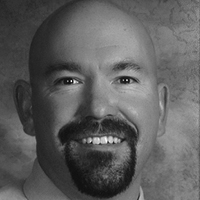
Brad Neuendorf
Lander Valley High School
Lander, WY
Grades: 9–12
Students: 501
Region: Rural
• Standards-based grading
• Positive behavioral interventions and suppports
During the 2016–17 school year, our district and school came together to become a professional learning community. The focus that year was to clearly define what we wanted our students to know and be able to do. Department by department, Lander Valley High School prioritized standards, created proficiency scales, ensured common formative assessments reflected those scales, and created a standards-based grading system to serve their 500 students. Over the course of this three-year transition, we have yielded a 10 percent increase to our graduation rate and we were recently named a U.S. News and World Report Best School and an AP Honor Roll School.
